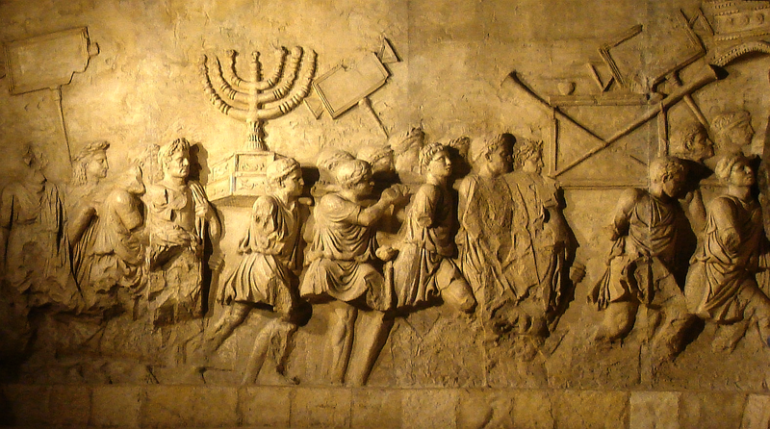Past injustices can never be undone. For millennia, the Jewish people have been persecuted, exiled, confined to the margins of society. None of that can ever be changed. But, it would be wrong to think that we can only strive toward justice in the present and future.
How we choose to remember our collective story shapes our relationship to the past and that of future Jewish generations. An unjust historical account is one which erases our people, their sufferings and their accomplishments from our collective memory. A just history is one which restores their proper place in the light. One such forgotten story is that of the Roman Jews.
In the city of Rome, there is a bridge which spans the Tiber River from east to west. Built in 62 B.C.E., it is the oldest surviving Roman bridge in the city. Although it is now possible to walk freely across the Tiber here, this was not always the case. Centuries ago, starting in the 16th century, the eastern side was blocked by gates which authorities locked from dusk to dawn. Behind that gate was the Jewish Ghetto.
In 1555, Pope Paul IV issued a papal bull known today for its first words: Cum nimis absurdum. It was absurd, declared the Pope, that Roman Jews should live as equals among Christians. Since the Jews were “through their own fault condemned by God to eternal slavery,” it was deemed only natural that their rights be stripped. Accordingly, the Pope declared that all Roman Jews would be required to live within the cramped confines of a walled Ghetto, to be built along the banks of the Tiber.
Jews were forced to wear identifying yellow clothing — hats for men and handkerchiefs for women — and restricted to a single profession: the sale of second-hand clothing. A mandatory curfew behind the locked gates of the Ghetto was strictly enforced, and attendance at Catholic services on Shabbat mornings was compulsory.
Although the thousands of Roman Jews were of diverse origins and varying practices (Ashkenazi, Sephardic, Yemeni, Palestinian and pre-Diaspora Roman) only a single synagogue was permitted within the Ghetto. Within the walls of the Ghetto, limited space necessitated dense, tenement-style apartments and narrow, winding streets. The nearby Tiber River, which was prone to overflowing, flooded the Ghetto on a yearly basis.
The story of the Roman Jews under Papal rule is not simply a story of repression, but also one of small acts of resistance. Consigned to the sale of second-hand fabrics, Roman Jews recycled textiles and wove vibrant, finely detailed Torah mantles. Compelled to attend Christian services on Saturday mornings, Jews napped with wax in their ears. To accommodate the demands of the five subcommittees and their divergent practices, a single Cinque Scole synagogue with five connecting rooms was built, enabling simultaneous services for all five communities.
Over three hundred years after the Ghetto’s establishment, the Ghetto walls were finally demolished in 1885 following Italian Unification, and a Grand Synagogue — the Tempio Maggiore di Roma — was erected.
But more suffering was yet to come. Roman Jews living in the former Ghetto area awoke on the morning of Oct. 16, 1943 to a raid by occupying German forces. 1,259 were captured. Sixteen survived the war.
Yet not even the defeat of fascism in Europe brought a lasting peace for Jewish Romans. In 1982, the end of Sabbath services in the Grand Synagogue was interrupted by the entry of five Palestinian terrorists affiliated with Abu Nidal, an extremist Palestinian liberation group. The assailants threw grenades and fired submachine guns. Only one victim died — a two-year old named Stefano. Now, the synagogue is a public museum of Roman Jewish history and offers tours of the former Ghetto. But armed guards, security cameras and barbed wire fences betray a continued sense of danger.
Few communities are more intimately acquainted with injustice than the Jews who made their home on the eastern bank of the Tiber River. But their story gives us the opportunity to reflect on the common threads that bind the disparate stories of Jewish communities into a single narrative.
We like to insist that we’ll “Never Forget” our past, but the details often slip through the cracks. And when microcosms of the Jewish experience fade into obscurity, so too do the names, lives and legacies of our kin.
These restored chapters of the Jewish story remind us of the essential components of Jewishness, the timelessness of anti-Semitism and the binary of persecution and resilience. At a time when intolerance appears resurgent and Sabbath services are again marked by acts of violence, it behooves the Jewish community to remember our forgotten forebears and do their lives justice.

